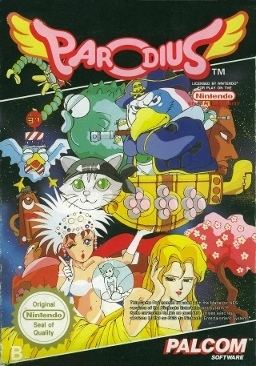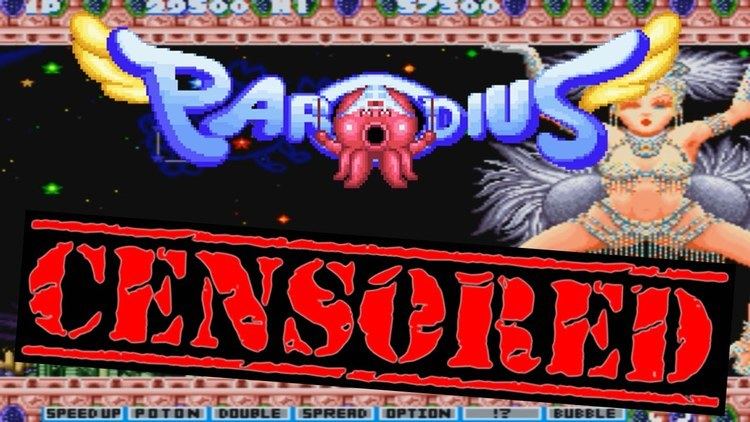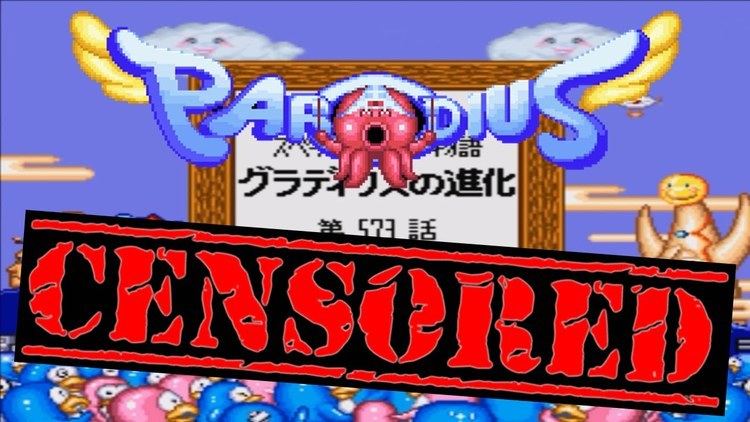Cabinet Upright Series Parodius Publisher Konami | Initial release date 25 April 1990 Developer Konami Mode Single-player video game | |
 | ||
Genre(s) Horizontal scrolling shooter Display Raster, 288 x 244, horizontal orientation Platforms Arcade game, Super Nintendo Entertainment System Similar Parodius games, Shoot 'em up games | ||
Parodius da octopus 1990 konami mame retro arcade games
Parodius! From Myth to Laughter (パロディウスだ! -神話からお笑いへ-, Parodiusu Da! Shinwa kara Owarai e, lit. "It's Parodius! From Myth to Laughter"), released outside Japan as Parodius, is a shoot'em up arcade game and is the second title in the Parodius series produced by Konami. The European SNES version is also known as Parodius: Non-Sense Fantasy. The gameplay is stylistically very similar to the Gradius series, but the graphics and music are intentionally absurd.
Contents
- Parodius da octopus 1990 konami mame retro arcade games
- Arcade longplay 414 parodius da
- Story
- Gameplay
- Characters and weapons
- Music
- Adaptation
- Ports
- References

This game is often mistaken as the original game of the series. The lesser known original game, Parodius: The Octopus Saves the Earth, was released for the MSX computer in Japan.

Arcade longplay 414 parodius da
Story

The Great Octopus has threatened Earth. To help Parodius save the planet, you and his friends must begin your search for the truth. As you search the whole world over you must find the enemy and you must destroy him.
Gameplay

As stated above, gameplay is very similar to the Gradius series with a few differences. Parodius retains the selectability of different weapons configurations but implements via four different characters: Vic Viper (from Gradius), Octopus, TwinBee, and Pentarou. The second main difference is the addition of bell power-ups, from the TwinBee series. These bells act as one-time power-ups, allowing the player to destroy every enemy on screen, fire huge beams of energy, etc. Enemies and environments from the Gradius games and TwinBee are mixed in along with a host of anime-style opponents, including scantily-clad women. All of the Gradius elements are integrated in a light-hearted fashion. The Big Core, a regular boss within the Gradius series, is given a neon look and is called "Viva Core". Moreover, there is a moai (Easter Island head statues) level, but all of the statues are given a much more animated look. The boss of that level, the Moai Head, fires other moai at the player by spitting them out of her mouth. The final boss, in typical Gradius fashion, is an unarmed enemy that once defeated results in a destruction/escape sequence.
Characters and weapons

Vic Viper – Traditional Gradius configuration
The missile will fall to the ground, and then move along until it encounters an enemy. The Double mode will fire two blasts, one forward, and one incline forty-five degrees above. The Laser mode is a thin blue laser, identical from Gradius.
Octopus – Salamander configuration
This configuration is identical to the weapons presented in the Salamander arcade game. The missile is '2-way' that yields two bomb-like explosives that fall both up and down. The Double is the tail gun present in the second configuration. And the laser is the ripple laser, which fires expanding concentric circles at the front of the craft/person.
TwinBee (Colored as Winbee) – TwinBee configuration
This set is the weapons from the vertically scrolling TwinBee, applied to horizontal gameplay. The missile is now the rocket punch, which has a larger impact area than the standard missile. The double is the same tail gun from the Octopus/Salamander configuration. The laser is a 3-way gun which fires shots the same size as the Double and standard weapons.
Pentarou – Gradius II: Gofer's Ambition configuration
This set is almost identical to one of the power meter sets in Gradius II: Gofer's Ambition. The missile is the photon torpedo (spelled here "Poton") that fires one missile that travels along the bottom ground and penetrates multiple enemies. The Double mode will fire two blasts, one forward, and one incline forty-five degrees above. The laser mode is different from Gradius II; instead of a ripple laser analog it fires bullets that create small explosions upon impact.
Music
Adaptation
Ports
Parodius has been ported to a number of platforms, most notably the Super Famicom (released on the SNES in Europe) and the PC Engine. The game was also ported to the Family Computer (released on the NES in Europe) with several stages omitted but with a new amusement park stage as well as several hidden bonus stages. Most recently the game, along with several other Gradius titles, has been ported to Java-based cell phones in Japan.
The Game Boy version (which was also released in Europe) shows the ages of the playable characters, and only has 8 stages, which include stages 1–6, and 10 from the arcade game. Stage 3 was moved to Stage 4. The Game Boy version of stage 3 also has a hidden stage. This version was also re-released in color as part of the Konami GB Collection Vol. 2.
There was also a Japan-exclusive port for the X68000.
The PC Engine version does not have the arcade Stages 5 and 8, but features a stage titled SPECIAL and a new introduction that features several strange-looking Japanese characters. This is in contrast to the arcade intro, which chronicles the Gradius legacy up until the time of release.
The SFC/SNES version added the bath house and "Omake" stages over the arcade version. In the "Omake" stage, the player immediately continues after dying, instead of at a checkpoint. The PAL version of the SNES port was titled Parodius: Non-Sense Fantasy and "Omake" was retitled "Lollipop".
Parodius was also ported along with its sequel Fantastic Parodius - Pursue the Glory of the Past on the compilation also simply titled Gokujou Parodius Da! Deluxe Pack in Japan and Parodius in Europe for PlayStation in 1994 and Sega Saturn in 1995 and in Parodius Portable for PlayStation Portable in 2007.
